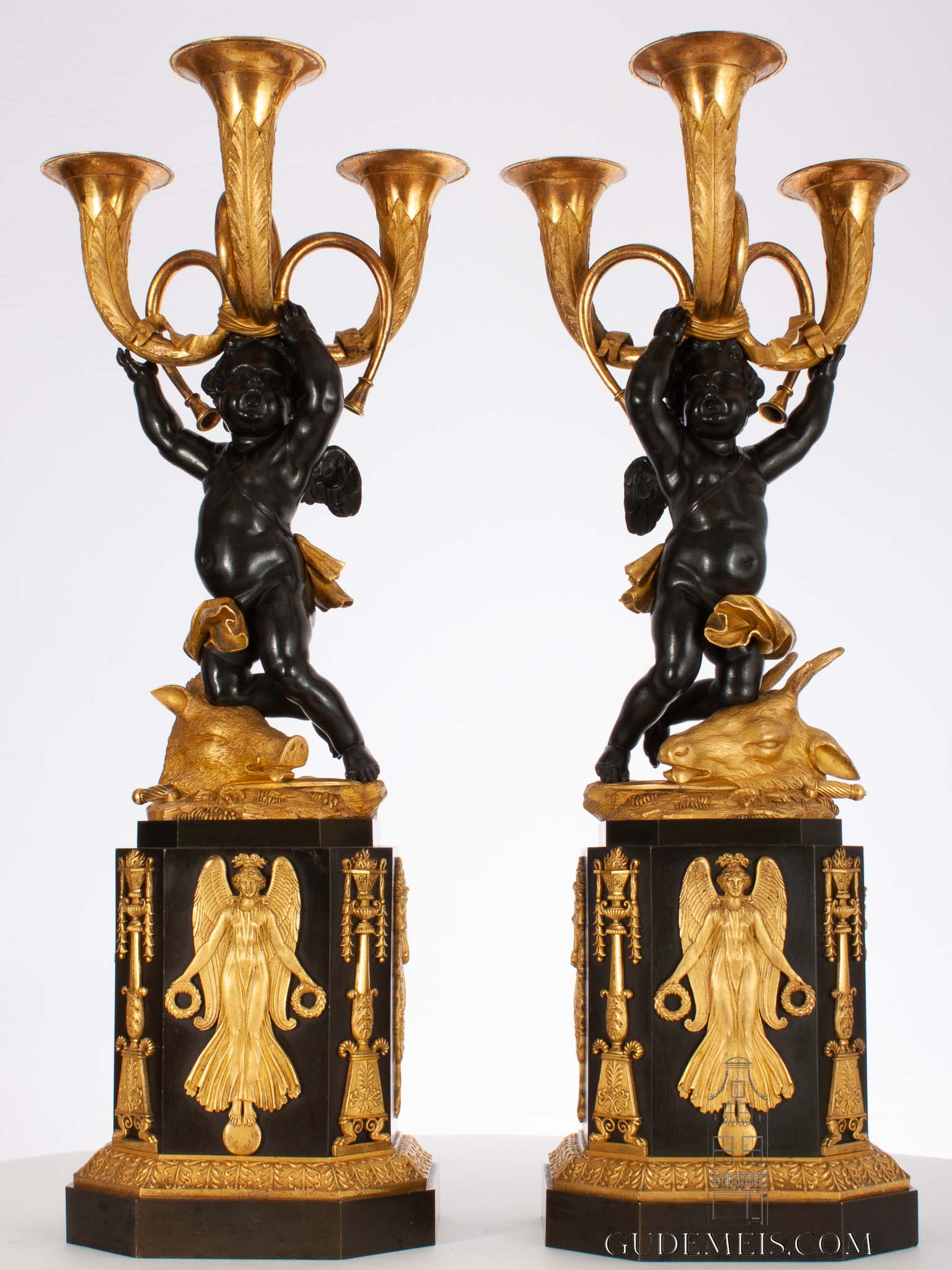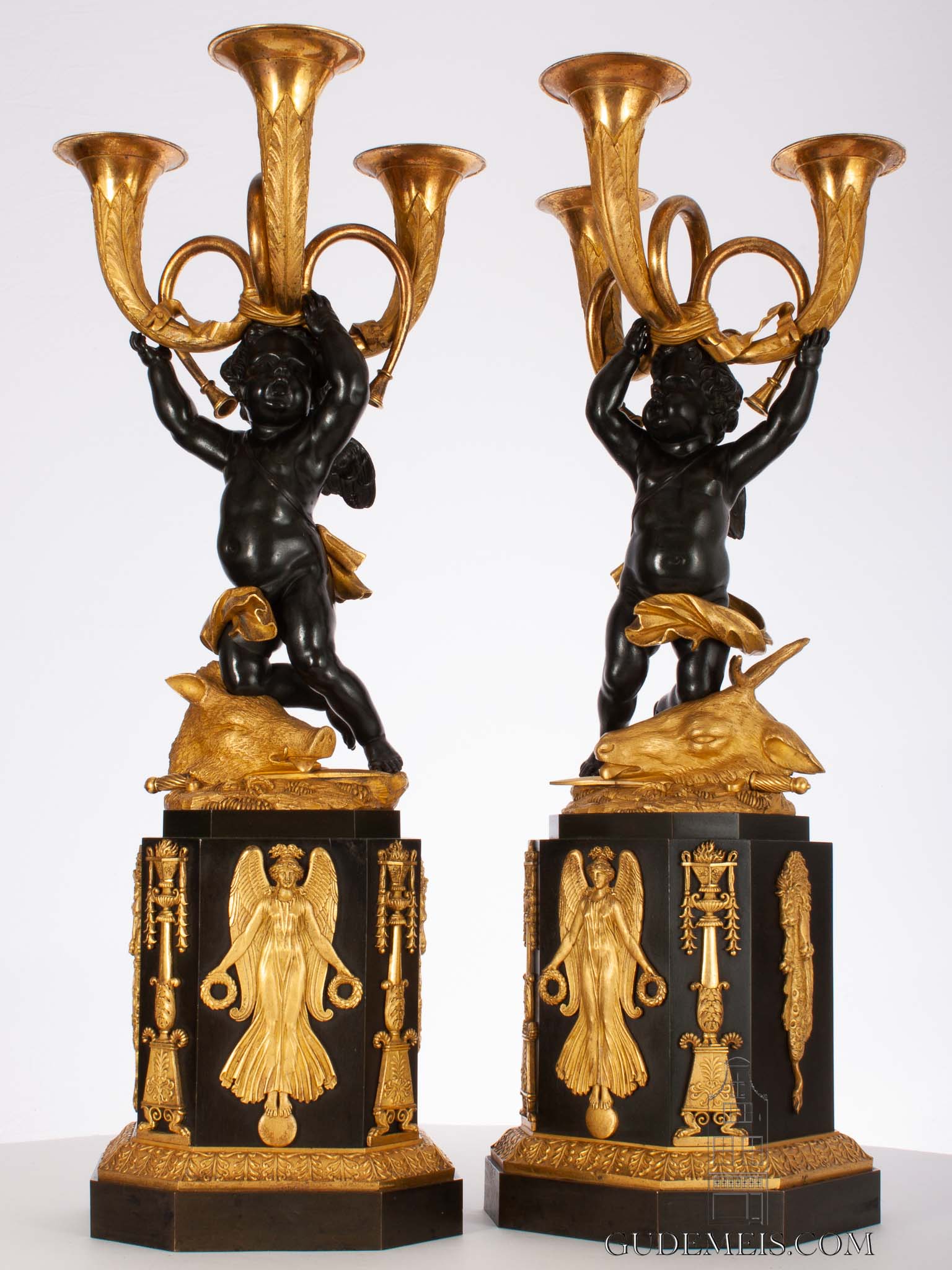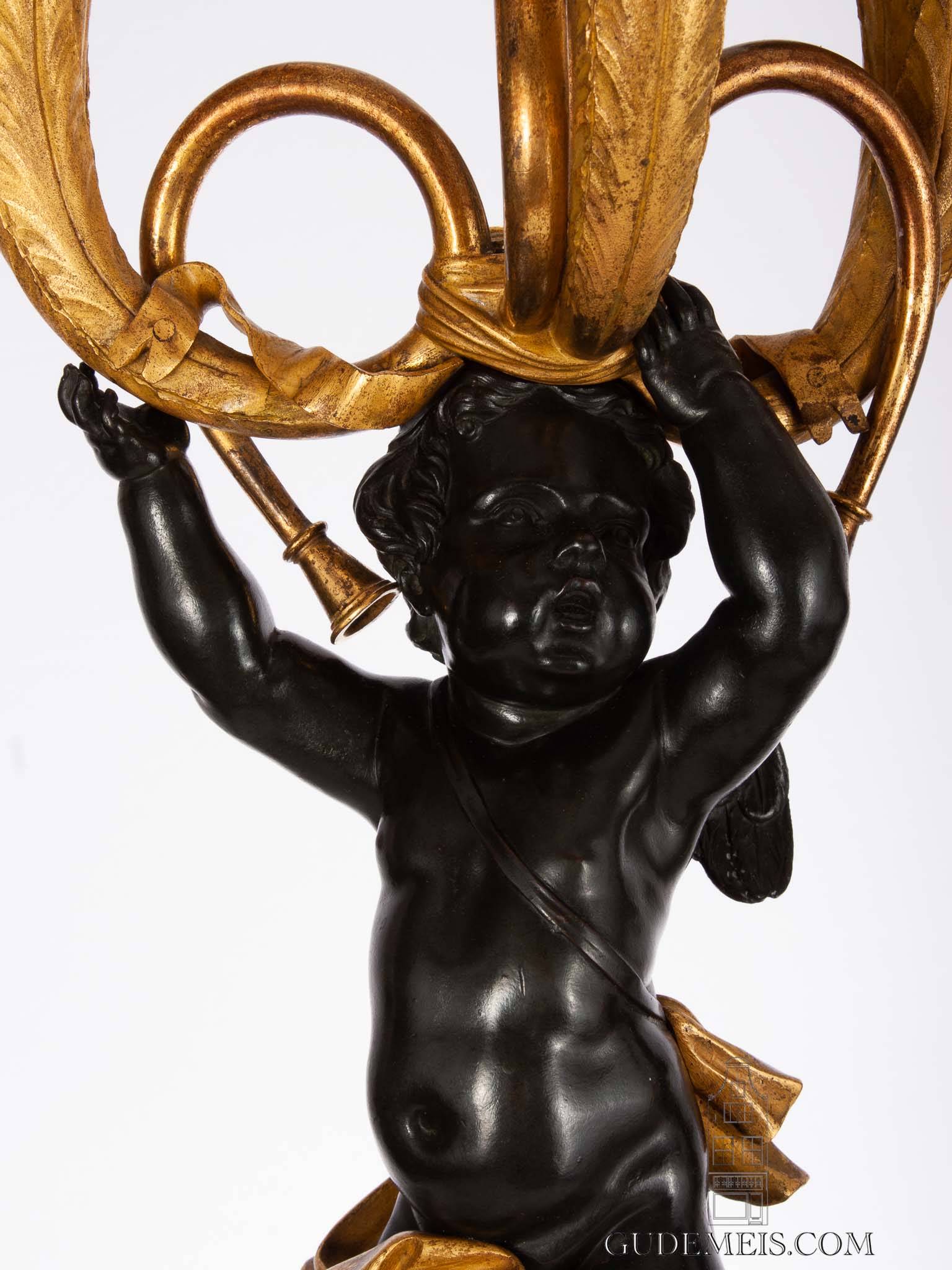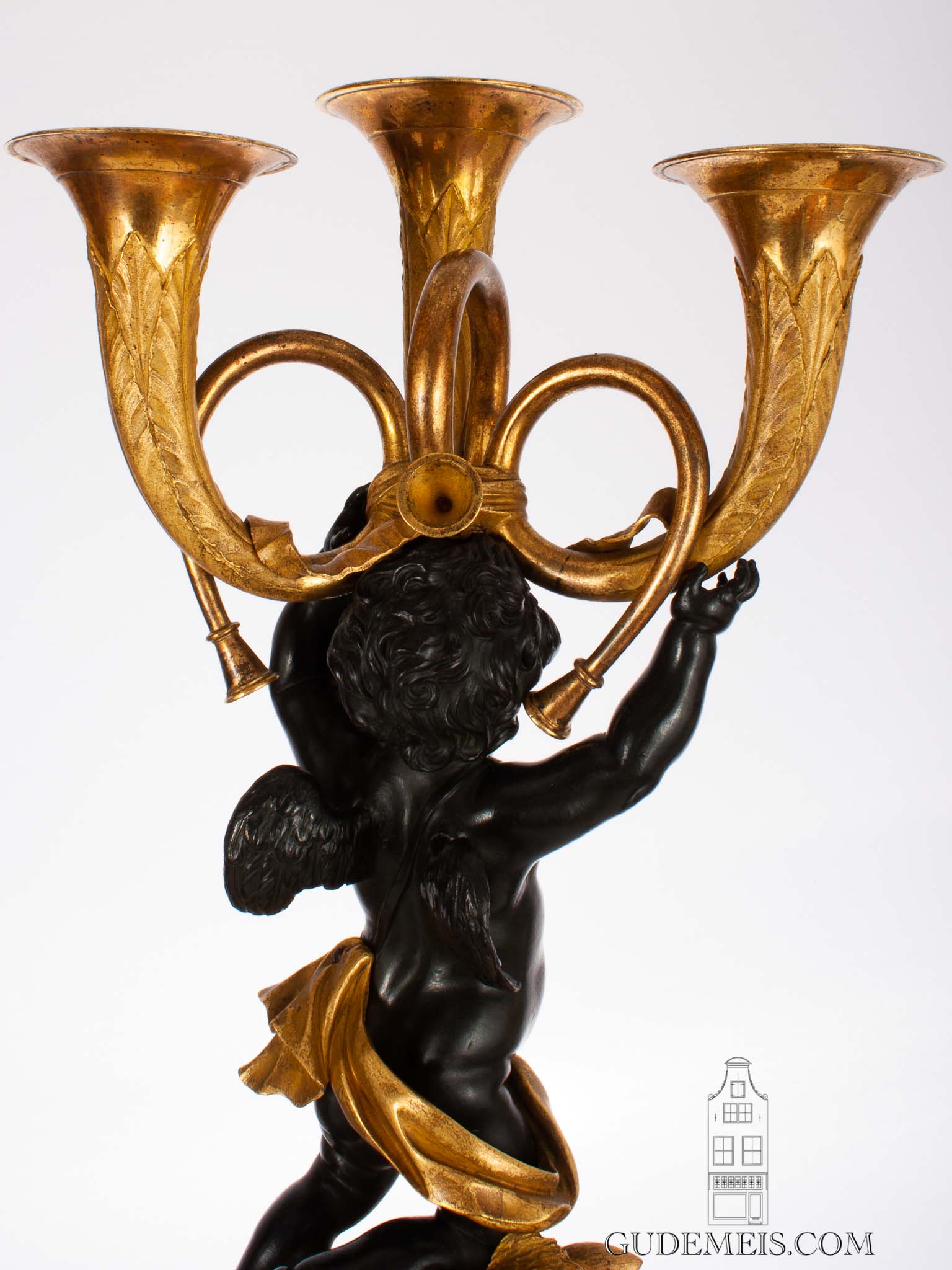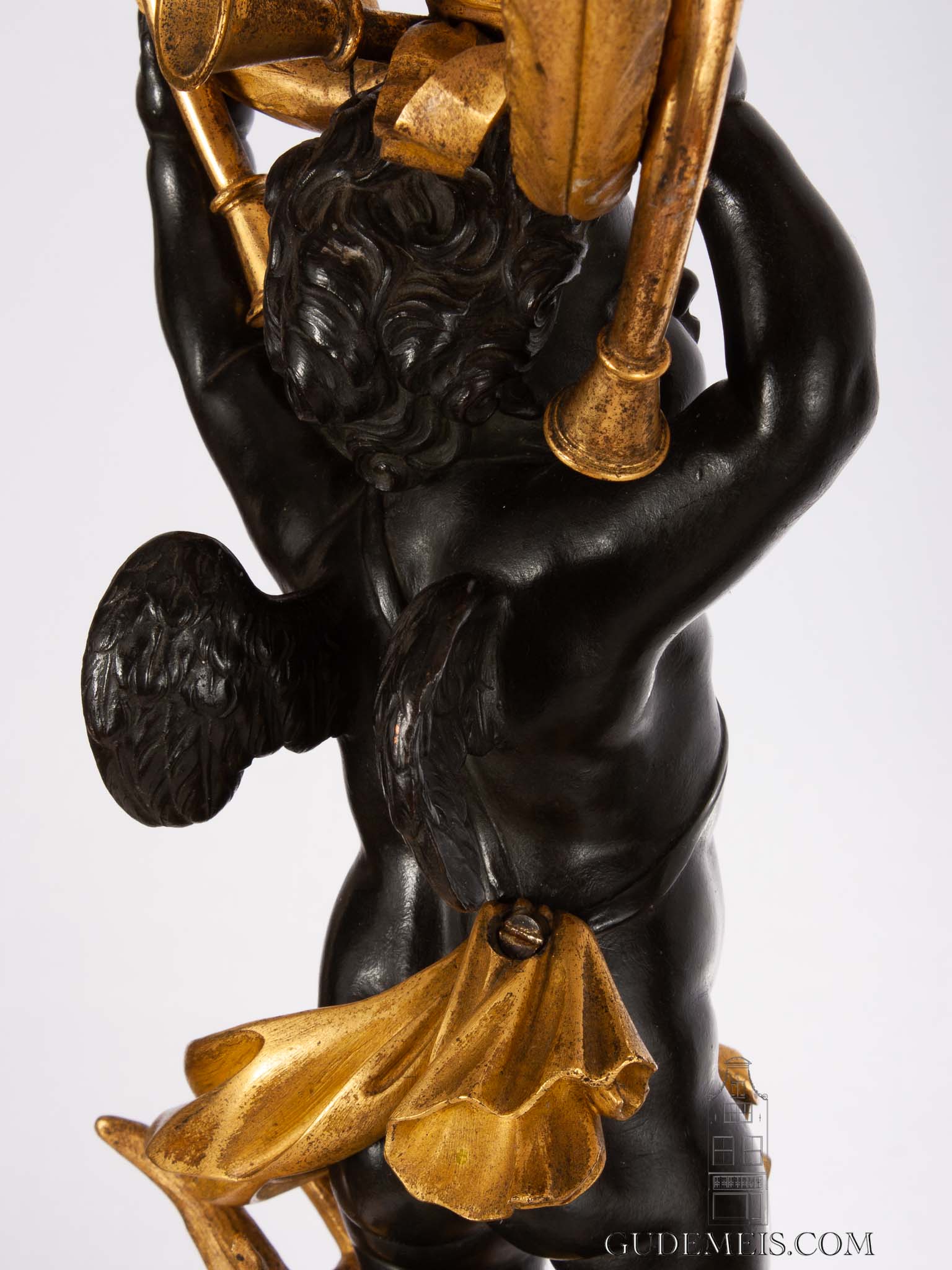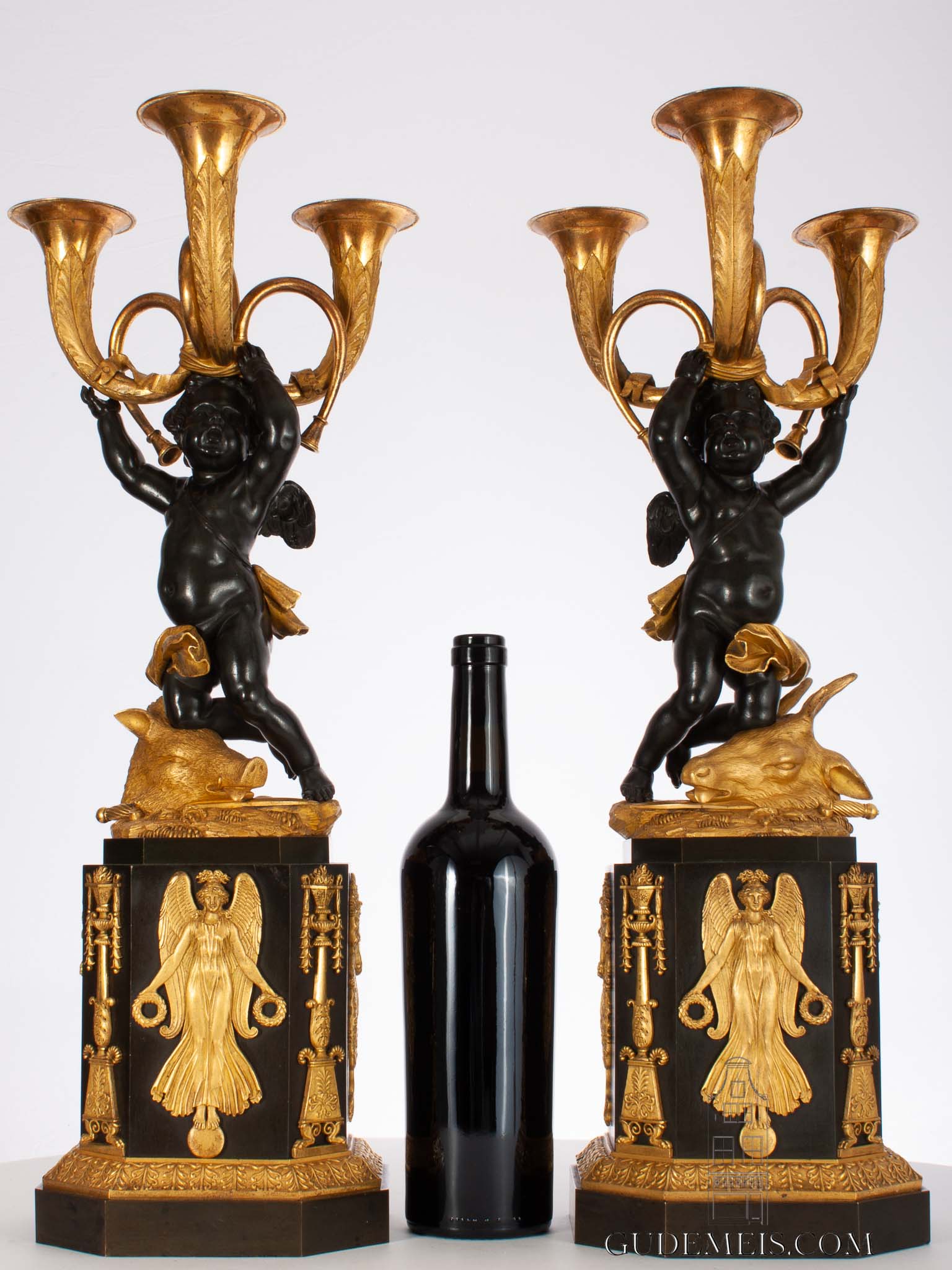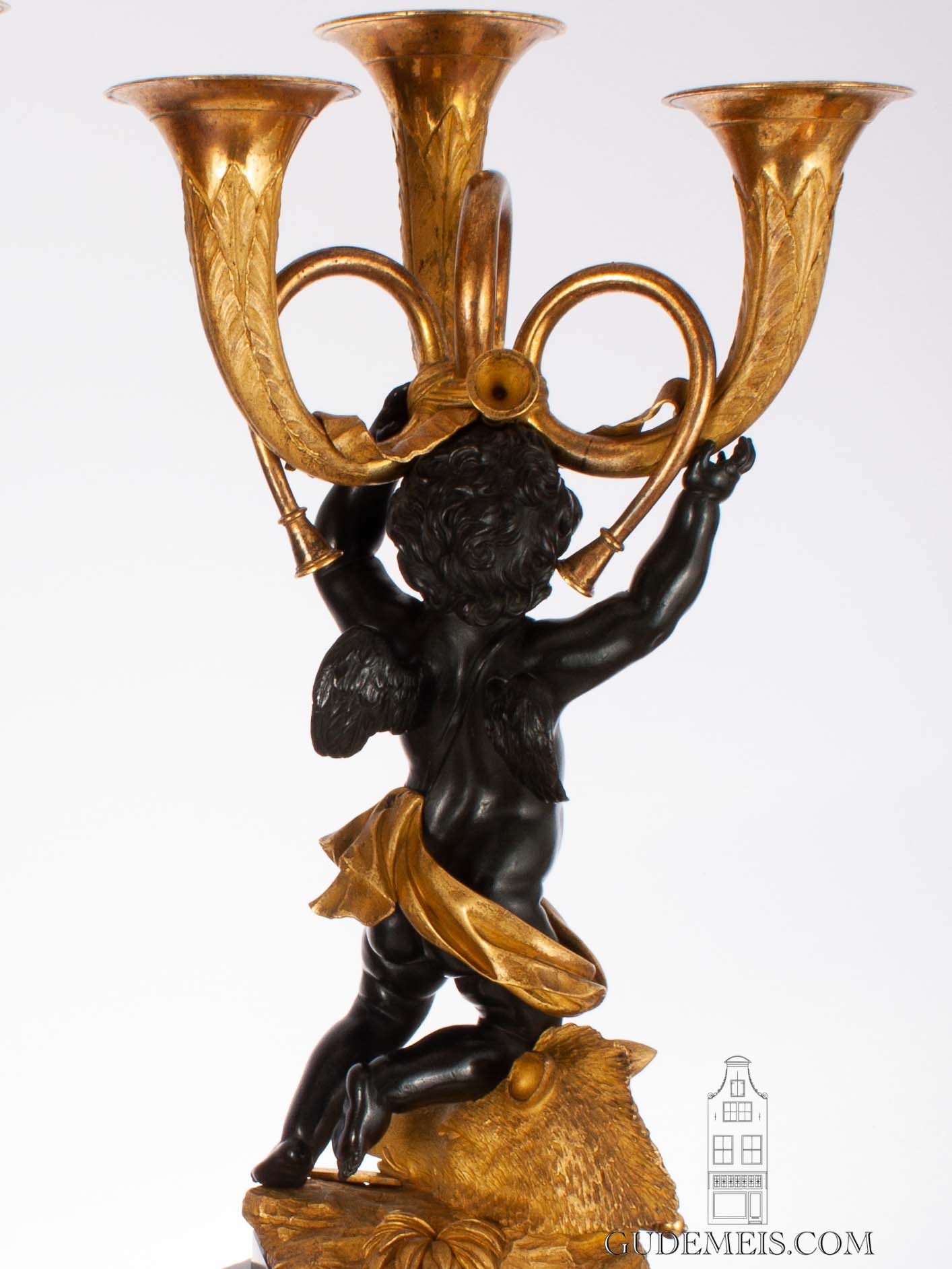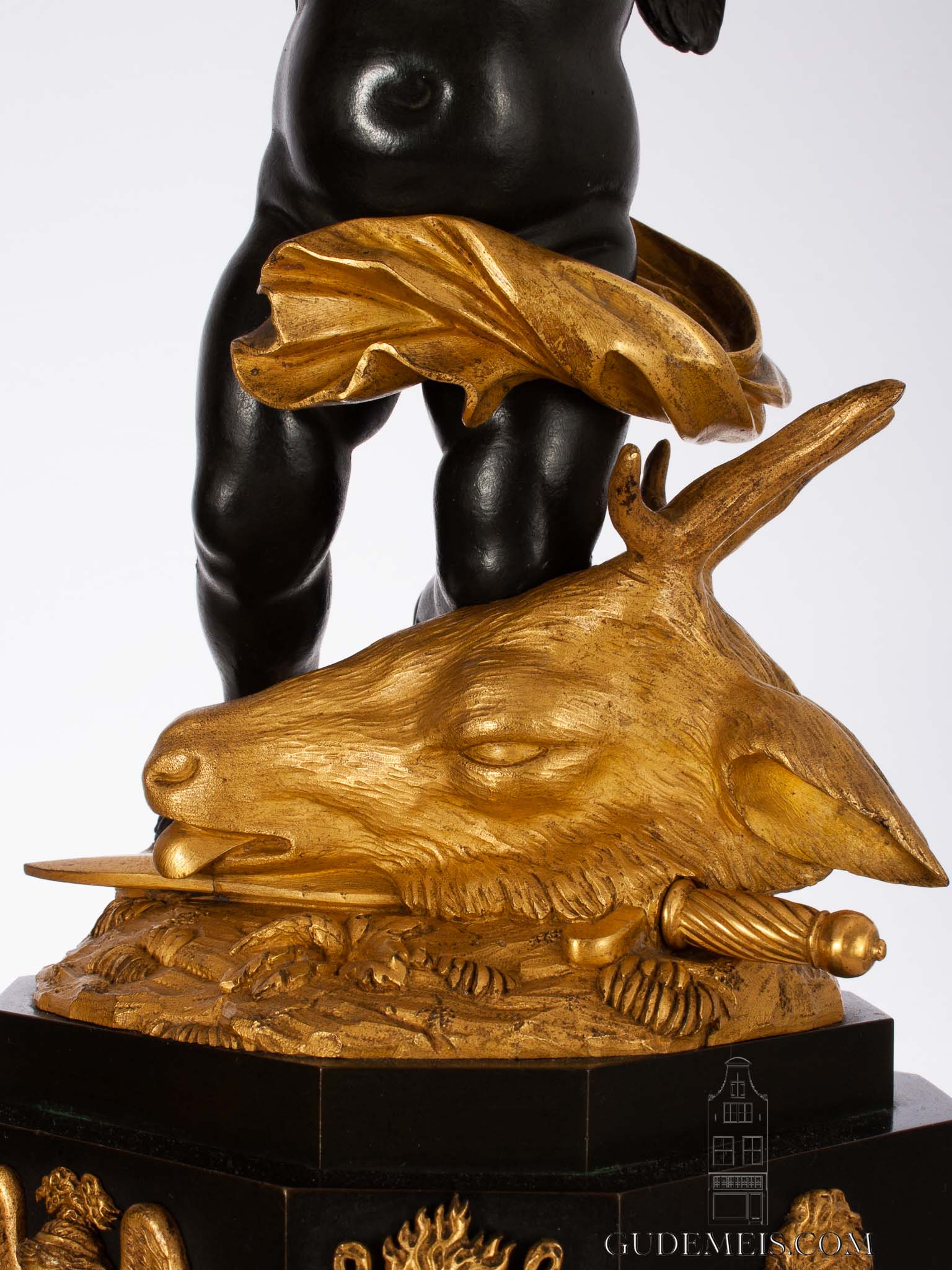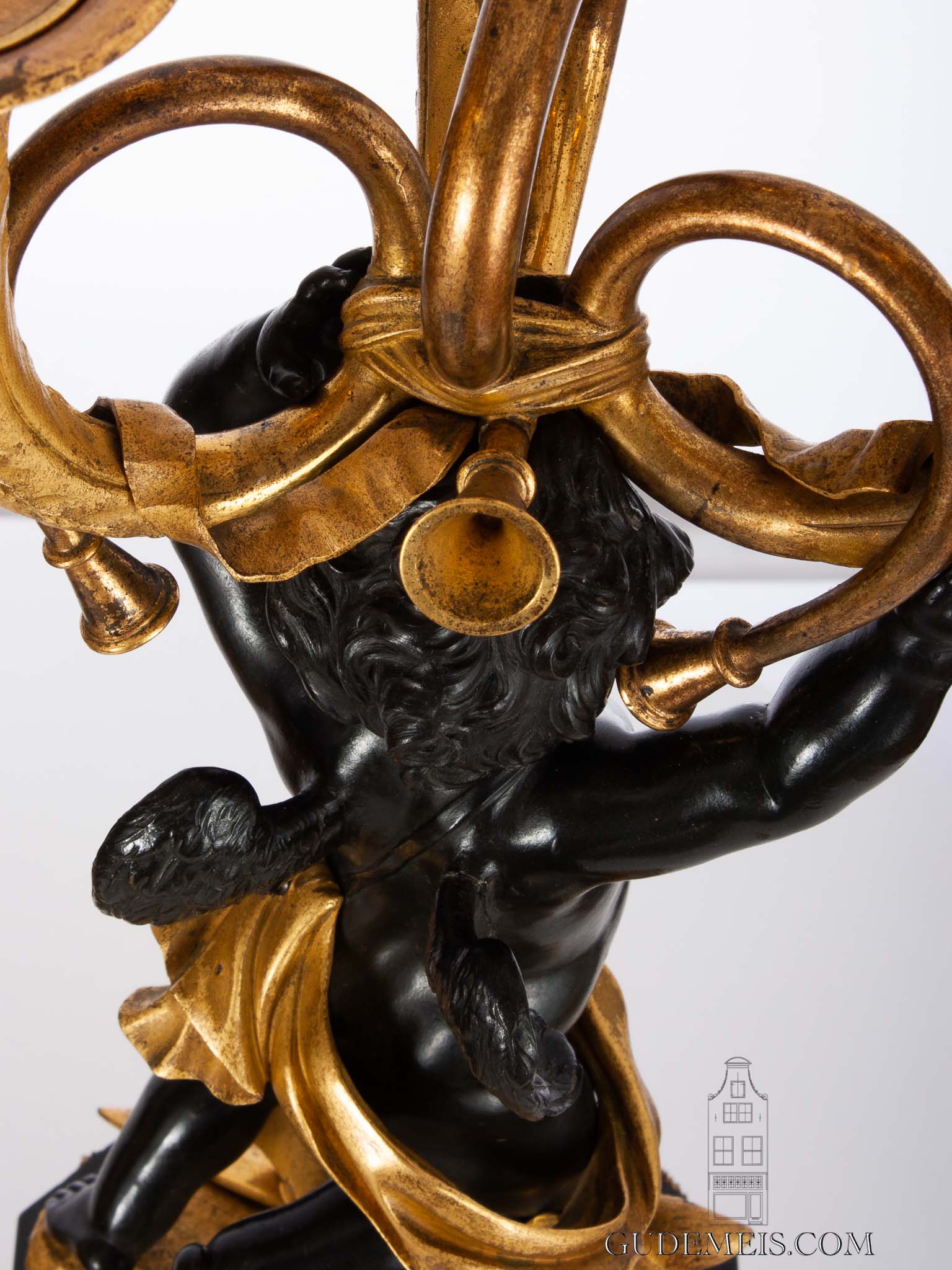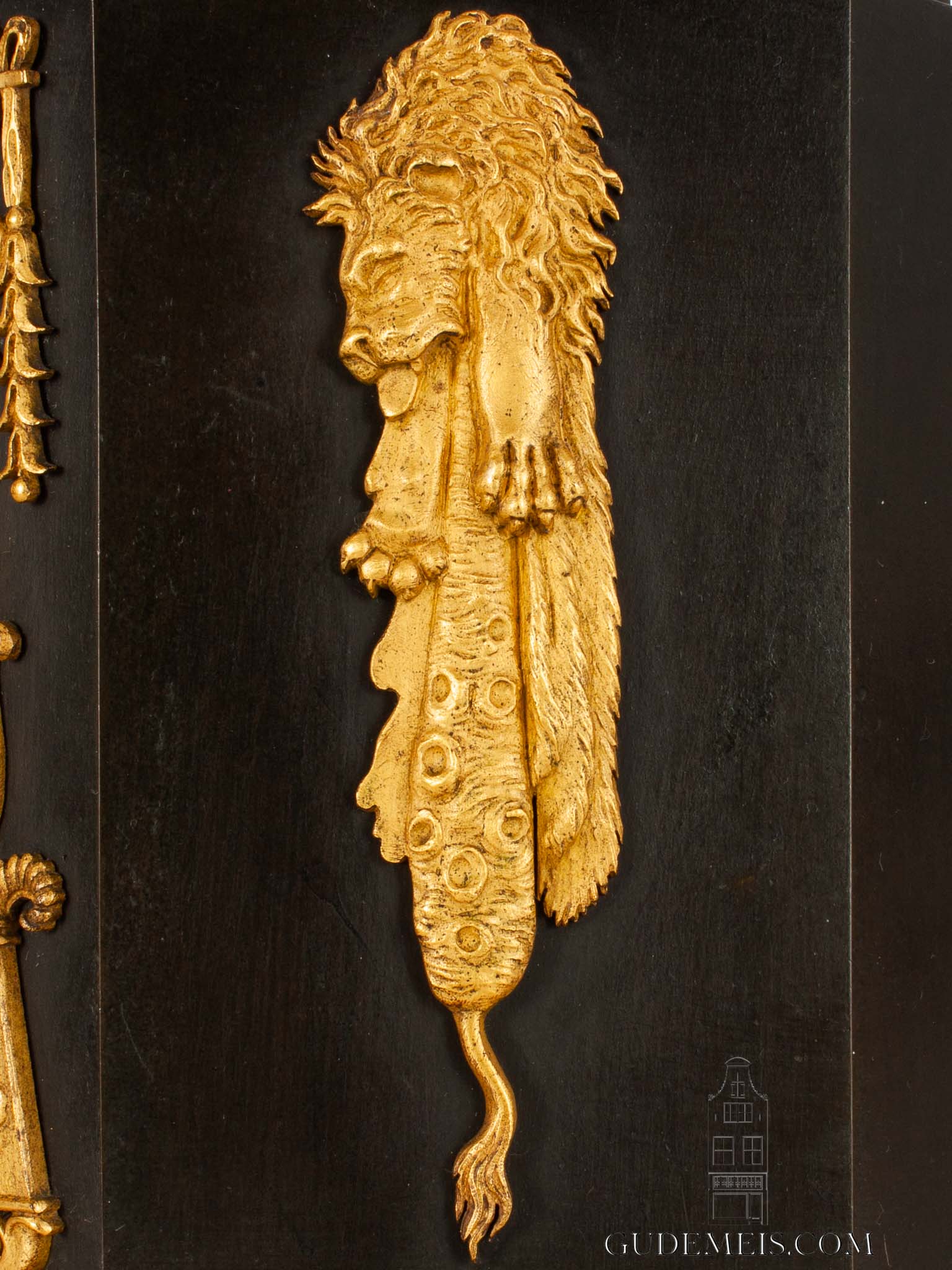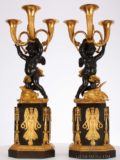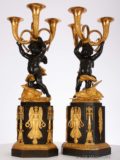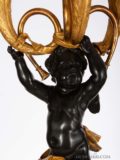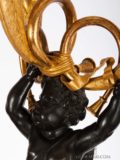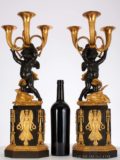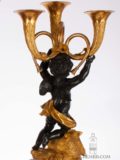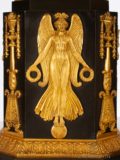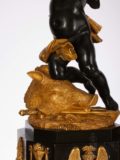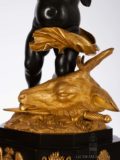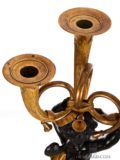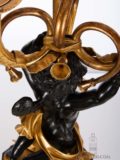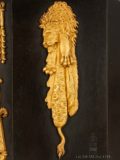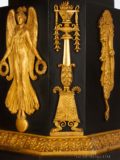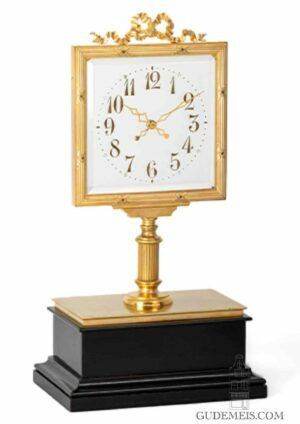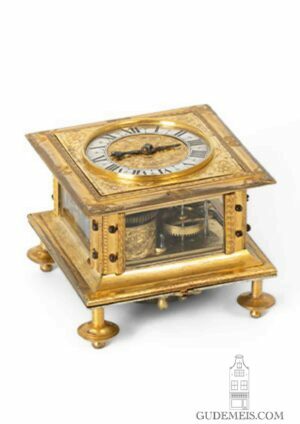An important pair French Empire ormolu and bronze sculptural candelabra, circa 1800
Description
The candelabra
Both candelabra have a patinated putto holding three candle holders shaped as hunting horns above their head. The putto on the right supporting his knee on a boar’s head, the left putto supporting his knee on a deer’s head. Mounted on a rectangular stepped base with a finely cast and chiseled ormolu mount of Nike. On the canted corners there are beautiful mounts of classical lamps. And on the sides are mounts incorporating a lion’s skin with a wooden club, both attributes of Hercules. The base rests on a plinth adorned with a beautifully cast and chiseled ormolu acanthus moulding. The bronze work is of very good quality. The theme with the putti holding hunting horns and animal heads is probably ‘Hunting’.
Emperial Quality
Tsar Paul I and his wife Maria Feodorovna had a great appreciation for French ‘Objects d’Art’ which they had seen on their visit to Paris in 1782. Between 1798 and 1799 the Tsar bought more than five hundred decorative French bronze objects. His architect Vincenzo Brenna was assigned to buy objects for the decoration of Château Michel through French merchants trading in St. Petersburg. In a list of objects bought from André Scholten of August 13th 1798 there was the description;girandoles à trois lumières représentant des Enfants nus portant des cors de chasse formant trois bobèches dorées au mat sur des piédouches de même garnis d’attributs de chasse. After the sudden death of Paul I in 1801 the decorative objects of Château Michel were dispersed over The Winter Palace, The Strelna Palace, the Tauride Palace and the Pavlovsk Palace. Today a comparable pair of candelabra is till in the collection of the Pavlovsk Palace. Of these rare candelabra a few other sets are known in the Collection of the Sigismond Bardac and the Eleanor Post Close and Antal Post de Bekessy collection.
